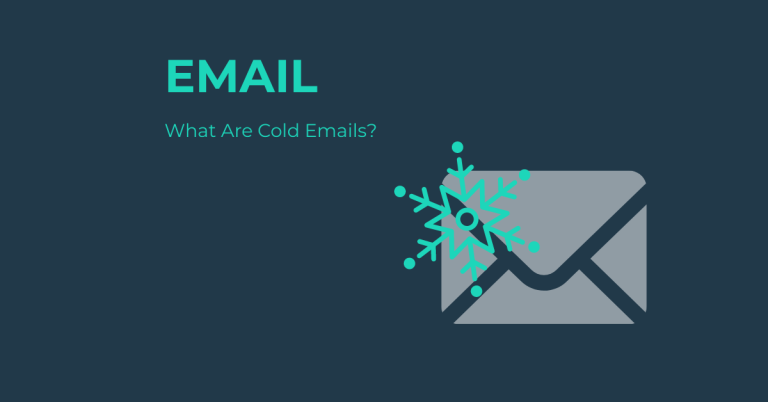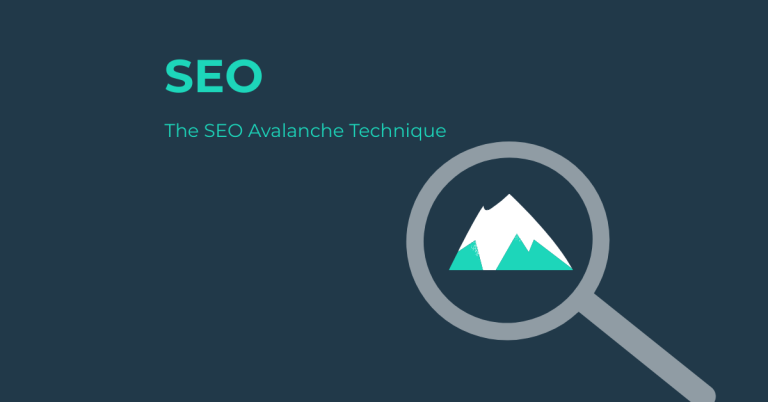To get leads for cold email, you need to start by identifying your ideal customer and understanding their specific needs and interests. Leverage platforms like LinkedIn for targeted prospecting, where you can build ultra-refined lists of prospects and send personalised messages that resonate with them. Use email automation tools to streamline and optimise your outreach efforts, crafting messages that are concise, aligned with the prospect’s needs, and include a clear call to action. By refining your strategy based on ongoing data analysis and adapting to audience feedback, you’ll be on your way to generating high-quality leads – and there’s more to explore to maximise your cold email success.
Key Takeaways
- Identify and understand your target audience: Segment based on demographics, geographic, psychographic, and behavioral characteristics to tailor messages and increase engagement.
- Leverage LinkedIn for lead identification: Use LinkedIn to find potential leads, engage through relevant groups, and personalise connection requests to enhance response rates.
- Create valuable content: Produce comprehensive, subject-specific content like whitepapers and case studies that educate visitors and justify sharing business email addresses.
- Optimise your website for SEO: Use targeted keywords and SEO strategies to increase visibility and attract organic leads that can be nurtured through cold email campaigns.
- Use personalised and strategic outreach: Craft personalised email messages and LinkedIn outreach that align with the prospect’s needs or interests, and include clear, low-pressure calls to action.
Identify Your Ideal Customer
To kickstart your cold email campaign, identifying your ideal customer is vital. You need to understand who they are, what they need, and what challenges they face. This involves delving into customer demographics and segmenting your target audience into specific groups based on common characteristics.
Start by researching your potential customers’ age, income, location, and interests. These demographic details will help you create targeted segments that are more likely to respond to your cold emails. For instance, if you’re targeting small business owners, you might segment them by industry, company size, or specific challenges they face. A retail business owner might have different pain points than a service-based business owner, so tailoring your message to each segment is vital.
To define your target segments effectively, consider using the four main types of market segmentation: demographic, geographic, psychographic, and behavioral. Demographic segmentation focuses on age, gender, income, and occupation, while geographic segmentation looks at location. Psychographic segmentation explores personality traits, values, and interests, and behavioral segmentation examines purchasing habits and interactions with your brand. By understanding these segments, you can craft personalised messages that resonate with your ideal customers and increase the likelihood of engagement.
Leverage LinkedIn for Prospecting
As you explore leveraging LinkedIn for prospecting, it’s essential to understand how this platform can be a powerful tool in identifying and connecting with your ideal customers. LinkedIn offers a vast network of professionals, and by using it strategically, you can find and engage with potential leads effectively.
Start by identifying relevant LinkedIn Groups where your ideal customers are likely to be active. These groups are niche communities where professionals with shared interests gather to discuss industry trends and exchange ideas. By participating in these groups, you can build rapport, establish authority, and create a foundation for future connections.
When reaching out to potential leads, personalise your connection requests to increase response rates. Avoid generic messages and instead, focus on shared interests, recent posts, or mutual connections. For instance, you could mention a specific discussion thread or a shared interest to spark conversation.
To streamline your outreach efforts, consider using LinkedIn automation tools that allow you to craft intelligent message sequences and personalise your messages at scale. These tools can help you warm up your audience before initiating a cold outreach, boosting open and reply rates.
Use Email Automation Tools
Once you’ve leveraged LinkedIn to identify and connect with potential leads, it’s crucial to integrate email automation tools into your outreach strategy. This step will help you streamline your cold email campaigns, save time, and boost efficiency.
Email automation tools offer a range of benefits that can greatly enhance your cold email efforts. For instance, email scheduling allows you to send emails at ideal times, increasing the likelihood of getting a response. Additionally, automation tools provide personalisation options, enabling you to tailor your emails to individual prospects, which can lead to higher engagement rates.
By using email automation tools, you can automate follow-up emails, track email metrics, and manage your contact lists more effectively. Tools like Close, Mailshake, and Woodpecker offer advanced features such as email sequencing, A/B testing, and behavioral triggers, which can help you refine your outreach strategy and improve response rates.
To get the most out of email automation, focus on creating targeted campaigns that resonate with your audience. Use data-driven insights to enhance your email content and timing. By leveraging the power of automation, you can scale your cold email outreach, generate more leads, and drive sales. So, integrate email automation tools into your strategy today and start seeing the benefits for yourself.
Craft Personalised Email Messages
While leveraging email automation tools can streamline your outreach efforts, crafting personalised email messages is essential for capturing the attention of your prospects and driving engagement. You need to tailor your emails to speak directly to your recipient’s background, skills, or business needs. This means going beyond generic greetings and incorporating personalised content that shows you’ve done your research.
To start, you should use email segmentation to divide your list into smaller, more targeted groups based on specific criteria or characteristics. This could be demographics, psychographics, behavior, or customer lifecycle stage. By segmenting your list, you can create more relevant and meaningful interactions with your audience. For example, if you’re targeting businesses in a specific industry, you can tailor your emails to address their unique pain points and challenges.
When crafting your personalised email messages, focus on using the recipient’s name, referencing recent achievements or trigger events, and highlighting mutual connections. You can also use visual representations, such as personalised images or videos, to capture their attention. Additionally, make sure to customise your call-to-action (CTA) based on the prospect’s position, decision-making authority, and specific needs. By doing so, you’ll increase the likelihood of getting a response and driving conversions. With personalised content and email segmentation, you can create cold emails that feel less like mass marketing and more like one-on-one conversations.
Optimise Your Email Campaigns
To optimise your email campaigns, you need to focus on refining your strategy to maximise engagement and conversion rates. This involves several key steps that can considerably improve the effectiveness of your cold emails.
First, segment your prospect lists to guarantee that your messages are tailored to the interests and needs of each recipient. This can be based on factors such as location, job title, or industry, allowing you to send targeted emails that resonate better with your audience.
Next, test and refine your email elements. A/B testing is vital for understanding what works best for your audience. Experiment with different subject lines, email copy, and call-to-action (CTA) buttons to identify which variations yield the highest open rates and engagement.
Additionally, establish a consistent sending schedule. Consistency is key in cold email campaigns. By sending emails at the right time and maintaining a consistent frequency, you can increase the chances of your emails being opened and read.
Finally, monitor and analyse your campaign metrics. Regularly track open rates, click-through rates, and conversion rates to identify trends and patterns. This data can help you make informed decisions to optimise your email campaigns further.
Track and Analyse Results
After optimising your email campaigns, the next step is to track and analyse the results. This is where you get to see the fruits of your labor and understand what’s working and what’s not. By tracking your performance metrics, you’ll be able to refine your strategy and make data-driven decisions to improve your cold email results.
To start, you need to identify the key metrics that matter most to your campaign. These include open rates, click-through rates (CTR), response rates, and conversion rates. Open rates tell you how many recipients are opening your emails, while CTR shows how many are engaging with your content. Response rates indicate how many recipients are replying to your emails, and conversion rates reveal how many are taking the desired action.
Use data visualisation tools to help you make sense of your metrics. This will give you a clear picture of your campaign’s performance and help you spot trends and patterns. For example, if you notice that your open rates are low, you might need to tweak your subject lines or sender reputation. If your CTR is low, you might need to make your content more engaging or relevant.
Refine Your Outreach Strategy
By leveraging the insights gained from tracking and analysing your cold email campaign results, you can refine your outreach strategy to maximise effectiveness. This step is essential in ensuring that your efforts are directed towards the right target audience and through the most effective outreach channels.
Start by examining the data on open rates, click-through rates, and response rates. Identify which subject lines, email content, and calls-to-action performed best. Use this information to tweak your strategy, focusing on what works and eliminating what doesn’t. For instance, if certain subject lines had higher open rates, incorporate similar elements into future emails.
Next, reassess your target audience. Are there specific segments that responded better than others? Tailor your messaging to resonate more deeply with these groups. Consider segmenting your list further based on industry, company size, or specific challenges faced by your prospects. This will allow you to create more personalised and relevant emails that address their unique needs.
Additionally, evaluate your outreach channels. Are there other platforms or methods that could complement your cold email efforts? Consider integrating social media outreach, LinkedIn messaging, or even phone calls to create a multi-channel approach. By refining your strategy based on data-driven insights, you can optimise your outreach efforts and increase the likelihood of converting leads into clients. This continuous refinement process is vital to achieving long-term success with cold email marketing.
You’ve now got the tools to supercharge your cold email lead generation. By identifying your ideal customer, leveraging LinkedIn for prospecting, and using email automation tools, you’ll be targeting high-quality leads in no time. Craft personalised email messages, optimise your campaigns, track results, and refine your strategy to maximise your outreach efforts. With these strategies, you’ll be well on your way to generating leads that convert and growing your business.




